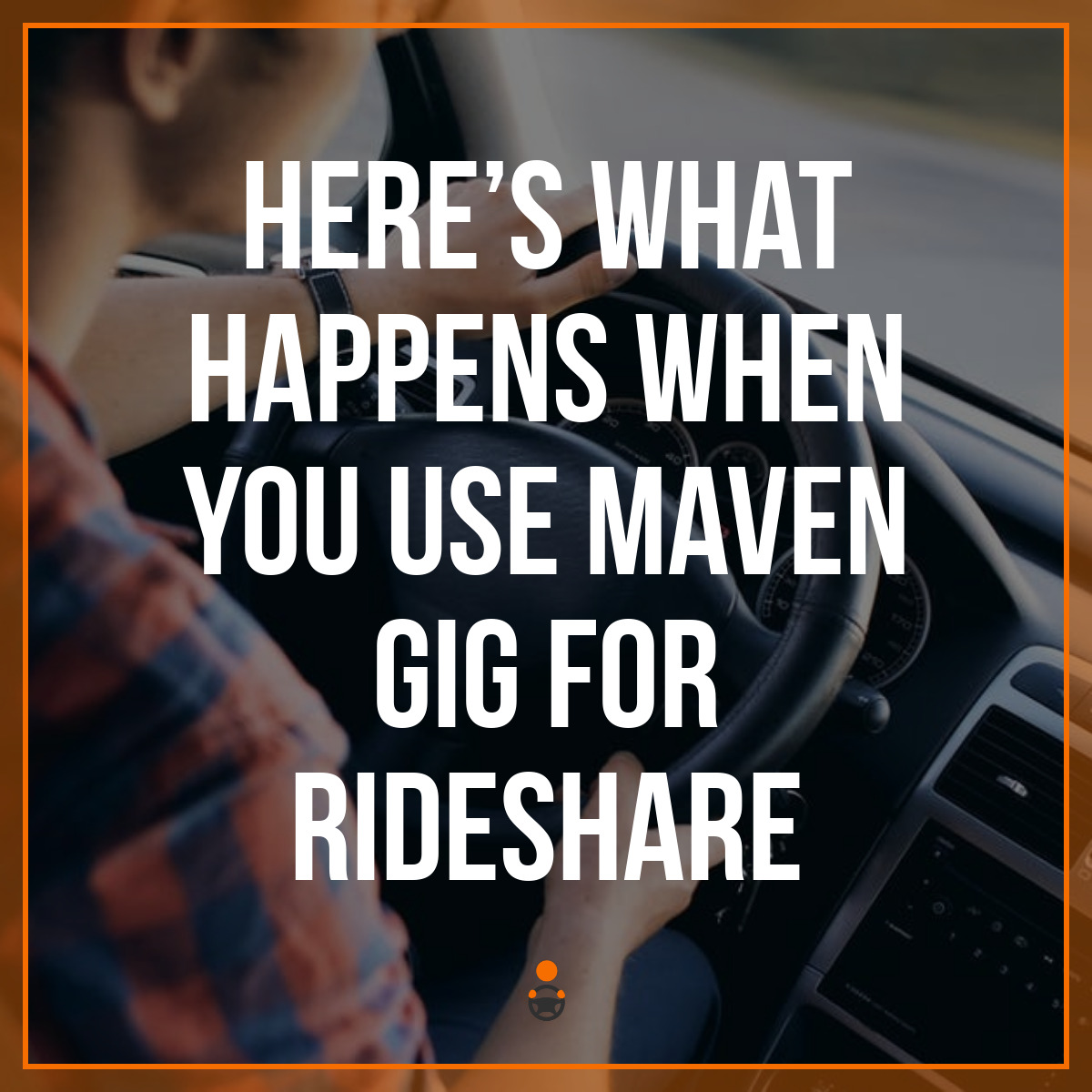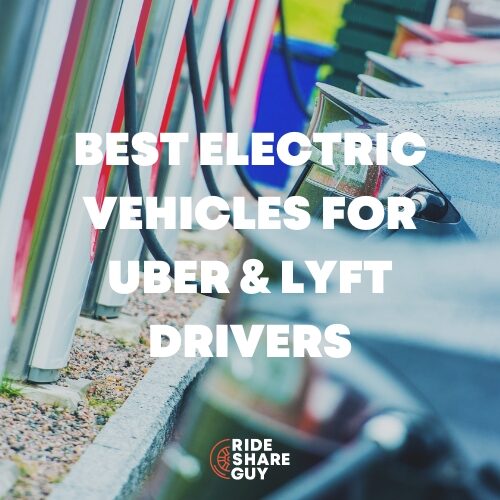NOTE: Maven Gig is no longer in business.
To see alternative options, visit our Vehicle Marketplace.
One barrier to entry into the gig economy is that you need a car if you want to drive for Uber, Lyft, Postmates, Grubhub or the other services. And not just any car: it must be economical, reliable and meet the platform requirements. If you’re considering renting a car for rideshare, RSG contributor Gabe Ets-Hokin shares his experience using GM’s Maven Gig.
Rideshare driving isn’t for everybody, so I don’t try to recruit every person I meet. But when I do (very occasionally) try to turn a passenger into a driver (with my referral code, of course), they frequently tell me they don’t have a car. I tell them they don’t need one; in fact, as Harry’s recent podcast guest points out, it’s a bad idea to buy a new car for gig work, as most new workers quit in the first six months.

If only there were a flexible way to rent a vehicle for an open-ended period of time… oh wait! There is! In fact, there are several, including Hyrecar, Fair and Lyft Express Drive, which we’ve written about already. But GM, not to miss out on an opportunity to capitalize on the new gig economy, unleashed its own serve, an offshoot of its Maven car-sharing service for the general public. Meet Maven Gig.

What is Maven Gig?
Maven Gig is a service provided by Maven, GM’s car-sharing service. Instead of renting by the hour, drivers rent for a minimum of one week, and can keep renting the same vehicle for an indefinite time, as long as they bring it in once a month for inspection. Once drivers have the car, they can use it for just about any gig work you can imagine, including Uber, Lyft, Postmates, Grubhub or Doordash.
Looking for more vehicle options? Check out our Vehicle Marketplace!
Where Can You Use Maven Gig?
Right now, you can only reserve a car in these U.S. cities:
-
Detroit
-
LA
-
San Francisco
-
San Diego
-
Washington DC
-
Baltimore
This likely covers a very large percentage of rideshare and delivery drivers, and Maven promises more cities are “coming soon.” To make a reservation, you need to download the Maven App – you can use our affiliate link here. And once you’ve done so, you just enter your driver’s license and credit card and select a car at the closest location.

What Kind of Vehicles Does Maven Gig Offer?
As of right now, Maven offers a limited number of GM vehicles including the Chevy Malibu sedan, Chevy Trax crossover or Chevy Bolt EV. The gas-powered cars start at $199 a week, and the the EVs are $229, but include free use of EVgo DC fast-charge (DCFC) stations. I’ve always wanted to try working a premium service like XL or Uber Select, but Maven Gig doesn’t (yet) offer high-capacity or luxury vehicles, so that story will have to wait.
I own a Chevy Bolt, so I wanted a gas car to switch things up a bit, but here in the SF Bay Area, there is a very high demand for Maven Gig cars, and I found that the only thing available, week after week, was… a Chevy Bolt. At least they’re the better-equipped Premiere version, with leather seats, better backup cameras and a few other amenities. So I rented another Chevy Bolt lol – thanks Harry.
Maven Gig in Action
Once I had my reservation – which you can only do two days in advance – all I had to do was get to the Maven Gig location in San Francisco to pick up my car. To get there, I used a Bird scooter to get to BART and then hoofed it the remaining five blocks to 5th and Brannan, where Maven Gig shares a gritty warehouse complex with a very crowded dog hotel. It would be nice if Maven Gig offered a free Uber or Lyft ride to pick up the car like Fair does.
A few other drivers were also waiting to pick up cars, watching the “welcome” video with a soundtrack of hundreds of barking dogs.
I didn’t have to wait long after checking in on a laptop. A Gig employee greeted me by name and quickly brought my shiny black Bolt around front. He asked if I was familiar with EVs (there’s another video to watch if you’re not), and had me do a walk around of the vehicle to check for damage. The car was pretty unscuffed, surprising given it had 35,000 miles on it in the 18 or 20 months it had likely been in service.
I did notice it was pretty dirty inside; Maven keeps the outsides clean, but the interior windows and dashboard were dusty and grimy and the steering wheel was sticky. I’m not squeamish – I drove cabs in the ‘90s and would have been thrilled to get a cab this clean back then – but at over $1,000 a month this is a premium service. Call a detailer once every few months, guys!
Additionally, the car had been somewhat indifferently maintained. The front tires and rear tires were different brands – stock low-rolling resistance tires in back and some off-brand cheapies in front – and were extremely over pressurized. I also noted the steering felt sticky and notchy; functional, but not quite right. I don’t think they care too much about keeping the cars maintained, at least not as well as a regular rental car place might.
Maven places a $250 hold on your credit card as soon as you leave the lot, and then applies that amount towards the rental when you’re done. There were additional charges like tax and whatnot, though I didn’t get an itemized statement.
Driving with Maven Gig
Ensconced in my (second) Bolt, I headed back to Oakland to get the car added to my Uber and Lyft accounts. I was expecting something like Getaround, which automatically links the car to your Uber account, but instead it took some time. I wanted to get this car approved asap for Uber and Lyft so I took it to the Lyft hub. The inspector at the Lyft driver center told me they see lots of Maven cars, and the inspection took just a few minutes. Next I went to an Uber Greenlight center and well Uber took longer, because they’re Uber, but it still was less than 15 minutes.
If there’s no driver center in a convenient distance, you can still add the rental to your account (with any service) by just going through whatever process you use to add a vehicle. You’ll need an inspection, which can be as cheap as free to maybe $20 or 30 depending on where you go.
If you’re looking for ultimate convenience, you can also use a virtual service like Rideshare Mechanic (affiliate link) to get it done. This is a pretty cool concept since you’ll do a video chat with a mechanic from the comfort of your home and have a signed inspection form in just minutes.
The advantage of going to a driver center is that it’s instant; as soon as I left I could open the respective app, select the newly added Bolt and go online and work. Less than two hours after I left to pick up my Bolt, I was fully signed up with both platforms. It would be nice if the cars came pre-approved for Uber and Lyft.
The week I had the car was uneventful. The car performed just fine and the passengers didn’t notice it was a bit grubby (I don’t do windows). The car’s range was a little less than my own, and I did note it had lost a little more nominal battery capacity than my own car at similar mileages, likely due to being mostly fast charged at EVGO stations.
My final concern was tolls, as Maven charges $3 on top of any tolls if you don’t pay cash or use a toll-pass transponder. No problem; I just added it to my Fastrak account, and noted the Bolt had the red stickers–worth at least their weight in gold here in California–that allow you to travel in carpool lanes solo or with just one passenger. To some people, that’s worth $265 a week right there!
Returning the Maven Gig
At the end of the week, turn-in was simple. I parked the car at the Maven facility, waited for a Maven agent to help me, waited while he inspected for damage and handed over the key fob. Then, truly feeling like I was living in the gig economy, I used a Ford GoBike to get back to the BART station. Can a guy get a free Uber ride?
Conclusion: Should You Sign Up with Maven Gig?
For seven days of gig work, I paid a total of $287.35. A gas-powered car would have been $40 less. If you’re doing this full time, that would run you $1149.40 a month, which sounds like a lot, but the Bolt Premiere EV is a $42,000 car. If you financed 100% and didn’t get any discounts, rebates or tax credits, and paid about what I do in insurance ($250 a month through USAA), as well as maintenance and other expenses, the price difference wouldn’t be that great, with the advantage of being able to walk away if, for some wild reason, rideshare driving isn’t a safe, secure career.
As you can see, if you’re going to rent from Maven Gig or any of these services really you need to be prepared to spend at least 30-40 hours in the car in order to cover the weekly fee and then some.
Here are some pluses and minuses compared to some of the other rideshare rental platforms we’ve reviewed:
Pros of Using Maven Gig:
- The only way to rent an EV for rideshare use
- You can keep the car as long as you like or as short as you like (one week at a time)
- Some selection of body styles
- Use with any platform; not restricted to one or the other
- No minimum ride requirement or startup fee
Cons of Using Maven Gig:
- You have to bring the vehicle in every month (35 days for California, 28 everywhere else)
- Seven-day minimum
- Only GM vehicles
- You have to pay for gas
- Indifferent maintenance (may be better in other locations)
- High cost probably only makes sense for full-time drivers in busy markets
- Few cars available in my market; other markets may be better
Is Maven Gig a good solution for you? I’d set up a spreadsheet with your prospective earnings and expenses and work from there. I think if you work in an area served by Maven Gig, and are planning on driving 30 or more hours per week, and don’t want the commitment of buying a car just for gig work, it’s worth a shot.
Readers, what questions do you have about using Maven Gig? Or maybe you’ve used it and want to share your experiences? Let us know in the comments section below.
-Gabe @ RSG




